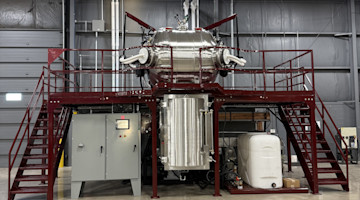The president’s State of the Union (SOTU) address is usually a speech highlighting previous accomplishments and laying out plans for the rest of the administration’s term, heavy on vision but light on details. President Joe Biden’s second State of the Union address fits that description. Although he hasn’t announced a 2024 run for reelection, he spent much of his speech focusing on core Democrat priorities, such as childcare, Social Security, education, labor, and wages. The importance of manufacturing to jobs and competitiveness was a key part of the speech.
Here are my five takeaways from the SOTU:
Biden put manufacturing front and center early in the speech, touting the fastest manufacturing job growth in 40 years. He pointed to the thousands of more jobs coming from implementing the Bipartisan Infrastructure (BIA) and the Chips and Science (CHIPS) acts. It’s heartening that strengthening manufacturing is viewed by both parties as a pathway to good-paying jobs and a middle-class way of life.
“Buy America” will figure prominently in government investments to update our infrastructure, build a domestic semiconductor industry, and move toward a clean energy economy. The president underscored that in his speech, and the administration is moving to clarify guidelines on domestic content in government projects. The Office of Management and Budget recently issued a Buy America guidance on materials and products for infrastructure projects. The eventual goal is to establish consistency for domestic content in all government projects. The public can comment on the OMB release until March 13, 2023.
Trade tensions with China will result in tighter export controls on advanced technologies. They already have. Biden cited the recent agreement between the United States, the Netherlands, and Japan to restrict exports of semiconductor technology as an example of how he will engage with our allies to ensure that China does not dominate the world in advanced manufacturing technology.
Tax increases on manufacturers are possible as the president tries to match his goals for increased support for seniors and working-class families to the national pocketbook. His speech focused on making wealthy corporations and individuals pay their fair share, as he assailed big pharma and oil and gas companies for making huge profits while many Americans are feeling pinched. There are several tax provisions, such as the phase-out of bonus depreciation and the amortization of R&D expenses, that AMT and other manufacturing organizations are trying to roll back. We’ll also be on the lookout for attempts to increase taxes on manufacturers and small businesses as demands to cut spending get louder.
Overall, the tone of Biden’s speech was positive and highlighted the accomplishments achieved when both parties worked together, such as BIA and CHIPS. He called on Congress to find other areas where they agree and focus on those. The president and House Speaker Kevin McCarthy seem to have a good working relationship, but it’s easy for extremes in both parties to dominate the airwaves and the legislative agenda. Manufacturers should hold their members of Congress accountable for getting work done these next two years, as attention will undoubtedly turn to politics as the 2024 elections draw closer.





